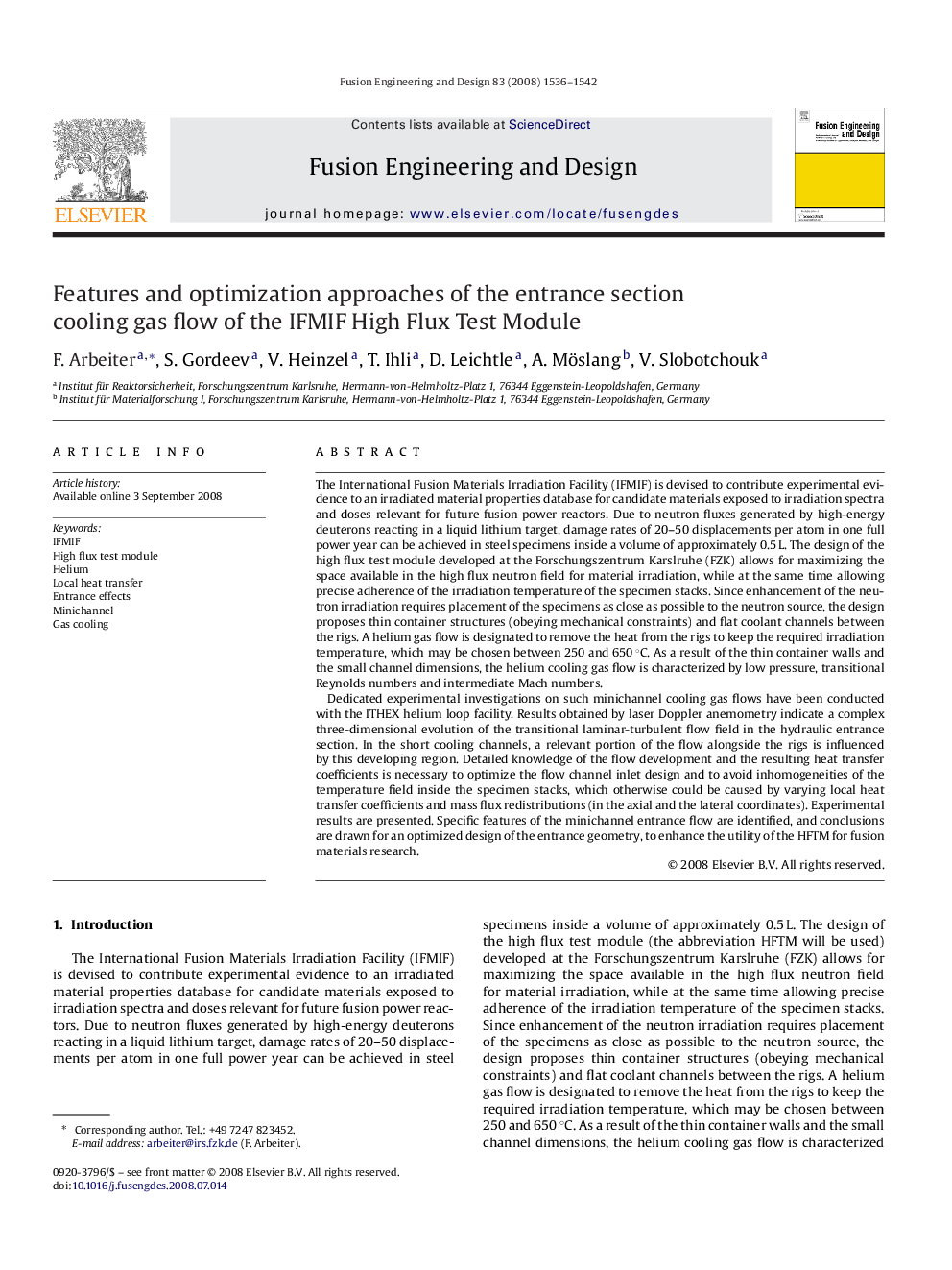| کد مقاله | کد نشریه | سال انتشار | مقاله انگلیسی | نسخه تمام متن |
|---|---|---|---|---|
| 272754 | 505030 | 2008 | 7 صفحه PDF | دانلود رایگان |

The International Fusion Materials Irradiation Facility (IFMIF) is devised to contribute experimental evidence to an irradiated material properties database for candidate materials exposed to irradiation spectra and doses relevant for future fusion power reactors. Due to neutron fluxes generated by high-energy deuterons reacting in a liquid lithium target, damage rates of 20–50 displacements per atom in one full power year can be achieved in steel specimens inside a volume of approximately 0.5 L. The design of the high flux test module developed at the Forschungszentrum Karslruhe (FZK) allows for maximizing the space available in the high flux neutron field for material irradiation, while at the same time allowing precise adherence of the irradiation temperature of the specimen stacks. Since enhancement of the neutron irradiation requires placement of the specimens as close as possible to the neutron source, the design proposes thin container structures (obeying mechanical constraints) and flat coolant channels between the rigs. A helium gas flow is designated to remove the heat from the rigs to keep the required irradiation temperature, which may be chosen between 250 and 650 °C. As a result of the thin container walls and the small channel dimensions, the helium cooling gas flow is characterized by low pressure, transitional Reynolds numbers and intermediate Mach numbers.Dedicated experimental investigations on such minichannel cooling gas flows have been conducted with the ITHEX helium loop facility. Results obtained by laser Doppler anemometry indicate a complex three-dimensional evolution of the transitional laminar-turbulent flow field in the hydraulic entrance section. In the short cooling channels, a relevant portion of the flow alongside the rigs is influenced by this developing region. Detailed knowledge of the flow development and the resulting heat transfer coefficients is necessary to optimize the flow channel inlet design and to avoid inhomogeneities of the temperature field inside the specimen stacks, which otherwise could be caused by varying local heat transfer coefficients and mass flux redistributions (in the axial and the lateral coordinates). Experimental results are presented. Specific features of the minichannel entrance flow are identified, and conclusions are drawn for an optimized design of the entrance geometry, to enhance the utility of the HFTM for fusion materials research.
Journal: Fusion Engineering and Design - Volume 83, Issues 10–12, December 2008, Pages 1536–1542